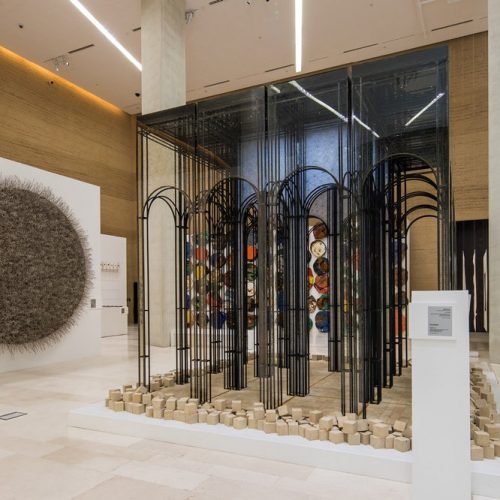Born in Zanzibar in the 1950’s, UK-raised artist Lubaina Himid has been at the forefront of the Black British Art Movement since the 1980’s— a movement best known for boldly confronting the consequences of colonialism and exploring how British culture interacts with the African diaspora.
Although the scene quickly disseminated and was replaced by the more commercially-driven ‘Young British Artists’ of the 1990’s, Himid’s crucial legacy of fighting racism was (finally) celebrated in 2018, when she became the oldest and first black woman to receive the prestigious Turner Prize.
Until October 6, the artist is presenting Work from Underneath at New York’s New Museum, which will be her first solo exhibition in the US and will debut an entirely new body of work in sculpture, painting and sound, examining the invisible legacies of colonial exploitation that can remain inscribed in architecture and language.


Inspired by post-colonial theorists, such as Frantz Fannon and Edward Said, Himid has been on a mission to empower Afro-descendent immigrants and help them re-affirm themselves in societies that continuously marginalise them. It was in the 1980’s that Himid and her artist friends really turned big, thanks to their politicised art that challenged Thatcherism and the regime’s institutional racism.
Famed for her vividly coloured graphic large-scale paintings, this show’s surprising centrepiece Old Boat / New Money is a 15-foot sculptural installation evoking a ship leaning against the gallery’s longest wall.

Although she’s been speaking out for years, the 65-year-old pioneering and art-activist, shows no signs of slowing down. Having shaped 1980’s counter-culture in British art, she’s on an on-going and uncompromising quest to forever challenge the status quo and introduce radical narratives to the wider art world.
Work from Underneath, until October 6 at New Museum, New York
newmuseum.org









